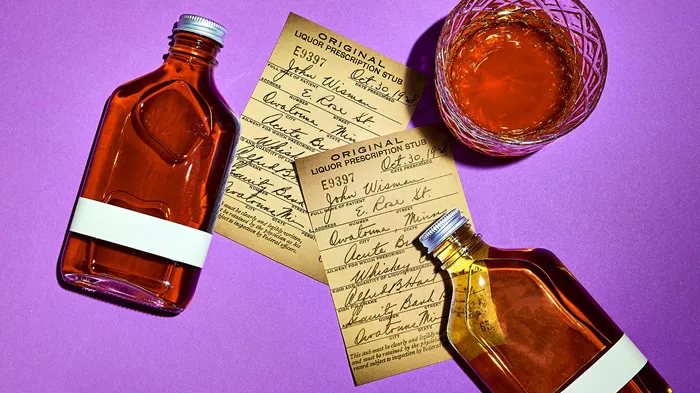Brandy, a quintessential spirit enjoyed worldwide, has a rich history intertwined with both distillation and fermentation processes. From its origins in ancient winemaking traditions to modern-day distilleries, brandy production involves meticulous craftsmanship and adherence to specific techniques. This article delves into the fundamental aspects of brandy production, exploring the roles of distillation and fermentation in shaping this beloved spirit.
The Origins and Evolution of Brandy
Brandy, derived from the Dutch word “brandewijn” meaning “burnt wine,” finds its roots in the art of distillation. Historically, it emerged as a method to preserve wine during long sea voyages, with merchants realizing that distilled wine not only traveled well but also developed unique flavors over time. This early association with distillation highlights brandy’s evolution from a preservation necessity to a revered spirit crafted for its distinctive taste.
The Fermentation Process in Brandy Production
Before brandy undergoes distillation, it begins with fermentation. This crucial process involves converting sugars present in fruit—typically grapes, though other fruits like apples or pears can also be used—into alcohol. Yeast plays a pivotal role in fermentation, consuming sugars and producing ethanol and carbon dioxide as byproducts. The resulting liquid, known as wine or wine base in the context of brandy production, forms the foundation upon which the subsequent distillation process operates.
The Role of Distillation in Brandymaking
Distillation stands as the defining step in transforming wine into brandy. The process revolves around heating the fermented liquid to vaporize alcohol, separating it from water and other components through careful temperature control. Brandies are typically distilled in copper pot stills or column stills, each method influencing the final product’s character and flavor profile. Distillation not only concentrates alcohol but also extracts congeners—aromatic compounds that contribute to brandy’s complexity and depth of flavor.
Types of Brandy and Distillation Techniques
Different types of brandy, such as Cognac, Armagnac, and American brandies, employ distinct distillation techniques that contribute to their individuality. Cognac, for instance, undergoes double distillation in copper pot stills, a method that enhances refinement and purity. Armagnac, on the other hand, traditionally undergoes a continuous single distillation in column stills, yielding a richer, more robust character. American brandies often utilize a variety of still types, reflecting a broader spectrum of flavors and styles.
See Also: What is gran gala orange liqueur?
The Impact of Aging on Brandy
Following distillation, brandy enters the crucial aging phase, where it matures in oak barrels. This period is essential for developing nuanced flavors and enhancing smoothness, as brandy interacts with the wood to extract tannins, vanillin, and other compounds. The duration of aging varies significantly among brandy types and styles; for instance, Cognac requires a minimum of two years in oak barrels, while premium expressions may age for decades, resulting in extraordinary complexity and depth.
Quality Assessment and Brandymaking
Throughout production, brandymakers meticulously assess quality at each stage—from grape selection and fermentation to distillation and aging. Quality standards, such as those governing Cognac production in France, ensure that only the finest brandies bear prestigious designations. Tasting panels and expert assessments play critical roles in maintaining brandy’s reputation for excellence, guiding producers in refining their techniques and preserving traditional methods.
Global Perspectives on Brandy Production
Beyond Europe, brandy production thrives in diverse regions, each with its own heritage and techniques. In South America, Pisco emerges as a notable brandy distilled from grapes and cherished for its aromatic intensity and versatility in cocktails. In Asia, particularly in countries like India and China, brandy production blends traditional methods with local ingredients, resulting in distinctive flavors tailored to regional preferences.
Innovations and Trends in Brandy Distillation
Modern advancements in brandy distillation reflect a blend of tradition and innovation. Improved still designs, precise temperature controls, and novel aging techniques contribute to the evolution of brandy profiles worldwide. Craft distillers, in particular, embrace experimentation with different fruit varieties and aging conditions, pushing the boundaries of traditional brandy-making while honoring its time-honored craftsmanship.
Brandy’s Culinary and Cultural Significance
Brandy’s versatility extends beyond sipping to culinary applications, where it enhances sauces, desserts, and even main courses with its depth and richness. Its cultural significance spans celebrations and rituals globally, from the ceremonial serving of Armagnac in France to brandy-laden holiday traditions in Eastern Europe. Each culture imbues brandy with its own rituals and meanings, showcasing its enduring appeal and adaptability across continents.
The Future of Brandy Production
Looking ahead, brandy production faces opportunities and challenges in meeting evolving consumer preferences and sustainability goals. Producers increasingly focus on environmental stewardship, adopting eco-friendly practices from vineyard management to distillation and packaging. Consumer demand for transparency and authenticity also drives innovation, encouraging brands to highlight provenance and production methods that resonate with conscientious consumers.
Conclusion
Brandy, a spirit crafted through a delicate balance of fermentation and distillation, embodies centuries of tradition and innovation. From its humble origins as a preserved wine to a globally cherished libation, brandy’s journey reflects the artistry and dedication of generations of brandymakers. As techniques evolve and consumer tastes shift, brandy continues to captivate aficionados worldwide, promising new discoveries and enduring appreciation for its rich heritage and unparalleled craftsmanship.


